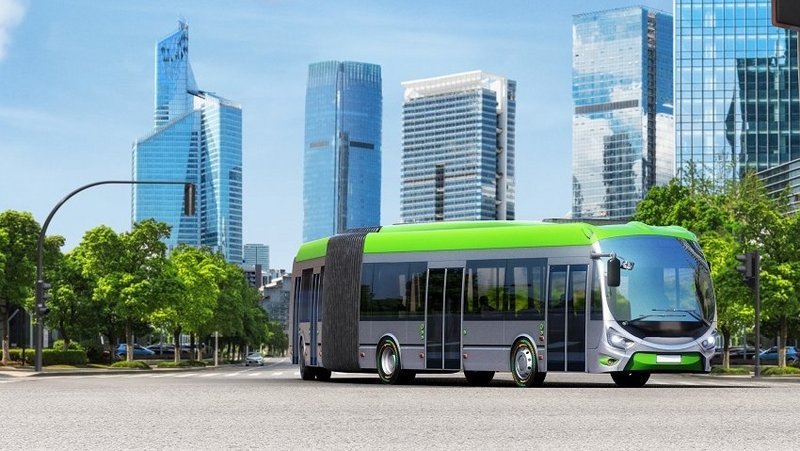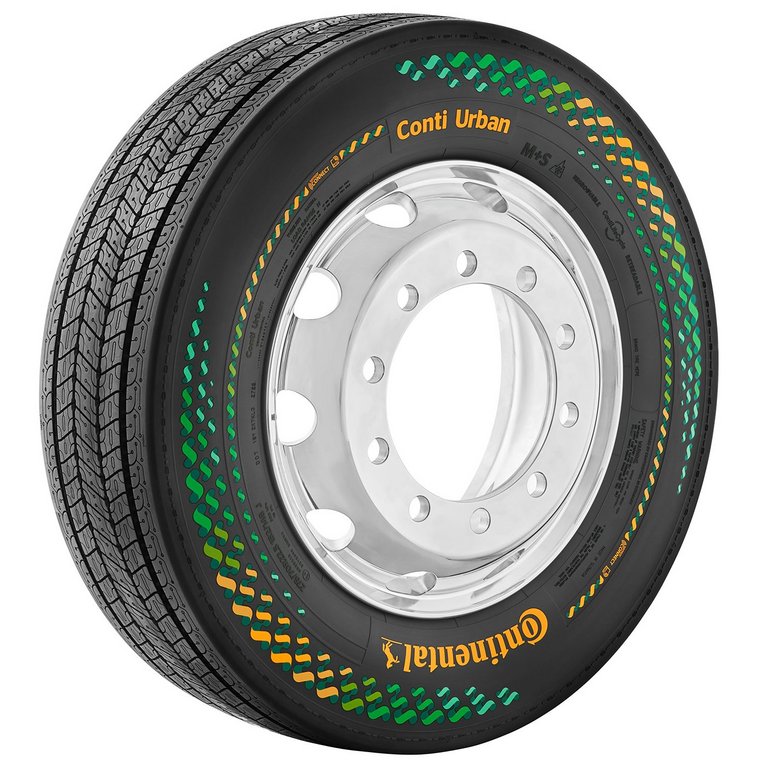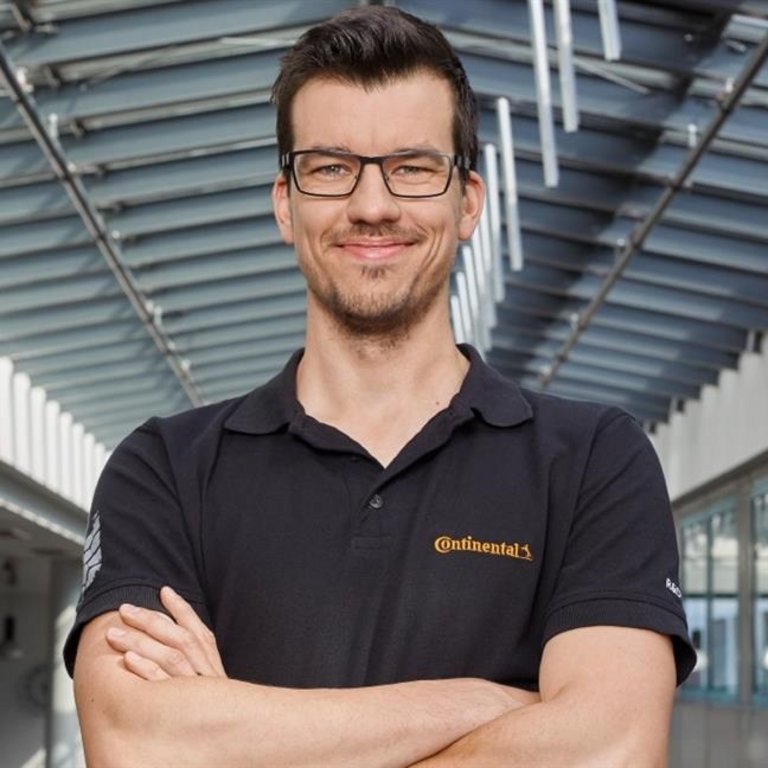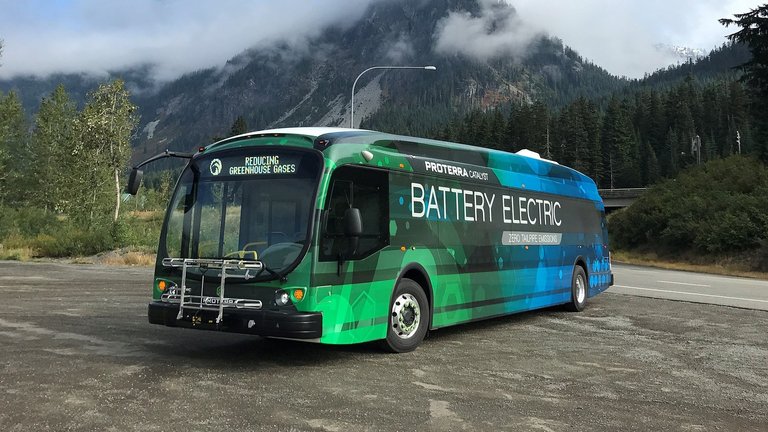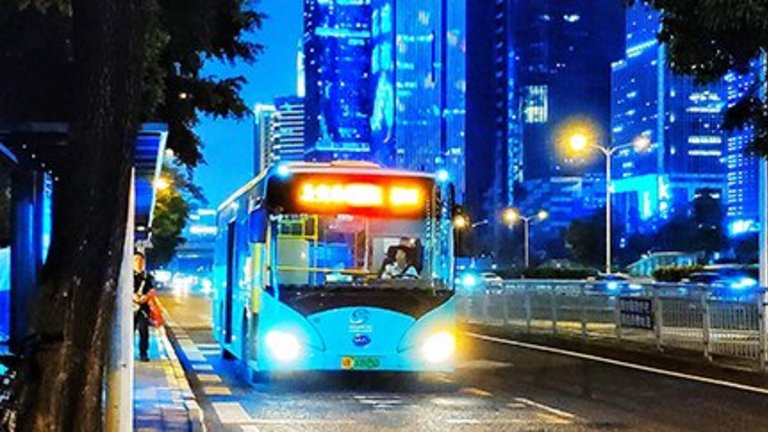All Aboard for the Future
The E-bus is here: Municipalities want to rapidly expand their electric bus fleets
Buses with electric drives will soon become the standard in local transport. Continental is involved in this future market, with the technology company developing many of the special components required.
High demand for components
The urgent need for electric bus components is illustrated by the findings of a recent study by consulting firm PricewaterhouseCoopers (DE only). According to this, of the approximately 54,000 public transport buses in Germany, only 1,269 (just under 2.35 percent) in operation feature electrified drive systems. The decisive factor, however, is the development trend in procurement. Whereas transport companies purchased only 11 new battery-powered buses nationwide in 2017, the figure had risen to 553 by 2021. And the trend is set to continue: by 2030, there will be just under 4,800 such buses throughout Germany.
In the USA, $1.66 billion in grants for more than 1,100 electric buses will be awarded as part of a comprehensive social and climate package to achieve net zero carbon emissions by 2050. In the EU, one of the factors responsible for the boom in electric buses is the Clean Vehicles Directive, which requires transport companies to procure at least 22.5 percent zero-emission vehicles by the end of 2025 and 32.5 percent from 2026. According to a study conducted by the technology market research company Navigant Research, as many as one-third of all buses worldwide could be electric by 2030.
Continental supplies technology
All of this can only be achieved through the development of technologies fully tailored to electric buses. Continental has been focusing on its core competencies. One of these, quite clearly, is tires. “Technologically speaking, the development of tires for electric buses is particularly demanding,” says Hinnerk Kaiser, head of Tire Development at Continental. This is because electric buses weigh up to three tons more than their diesel counterparts. Furthermore, the tires have to withstand the constant stop-and-go of city traffic and the higher torques, as with all electric cars. These buses also feature brake force recuperation. In this process, the electric motor generates electricity to charge the battery, resulting in additional stresses on the drive axle tires. And the vehicles also have to be as quiet as possible, which means the tires have to generate very little noise.
Requirements subject to testing
Continental is testing how these requirements can be met at its Contidrom test center and at further locations. The results then flow into tire development. Normally, the process from the initial prototype to volume production takes three to five years – in the electric bus segment, this is faster because “we can develop independently of existing tire generations,” explains Michael Koch from Product Development. This allows Continental to respond flexibly to new market requirements.
The Conti Urban HA3 tire, for example, has been designed exclusively for electric buses. Its features include a special tread compound, particularly thick sidewalls and an increased load index, enabling it to carry a load of up to eight tons per axle.
Modular and modern: the VDL driver’s workplace
For the bus interior, Continental has developed a driver’s workplace together with VDL Bus & Coach. After all, electric or not, driving will be ever more challenging in the future due to increasing traffic density, complex fare models and the wide variety of passenger demands. These challenges are met with a flexible and award-winning driver's workplace.
The driver's workplace is equipped as standard with a 12-inch color display with freely programmable and configurable screens. In the overhead area, there is space on the left and right for individual optional extras, such as a radio, climate control or additional displays for a better overview of the exterior of the bus – and thus a plus in safety. Users can also customize and program the control panels, such as the switches for opening the doors, to best suit their needs.
Well sprung
The air springs from ContiTech are also specially tailored to electric buses. They ensure a safe and comfortable ride for passengers – regardless of whether the bus is full in the morning or almost empty at night. Although the greater weight of the vehicles plays a role in the suspension, the higher center of gravity owing to the roof-mounted battery is even more significant, as this means that stronger forces act on the springs during lifting, lowering and rolling movements. They therefore feature a larger diameter, for example, which allows the forces to be better absorbed. Continental Advanced Dynamics Solutions (AD) has developed a large-diameter air spring that absorbs these forces better. It is also equipped with a highly flexible and wear-resistant rubber bellows casing and a particularly lightweight roller piston, which saves several kilograms of weight at each spring module.
In addition to springs, ContiTech is also responsible for the motor mounts. On the one hand, these are designed to improve the acoustics in electric buses, which are particularly susceptible to vibrations transmitted by the motor, which can generate whistling and booming noises. On the other, they are heavily loaded by stop-and-go traffic, recuperation and the high torque of the drive units. One remedy here is provided by a precisely matched rubber compound and geometry of the bearings.
Research, development and production at around 30 locations
Continental is also well positioned in terms of hoses and lines of all types. The experts at Continental supply steering and air compressor lines for various bus manufacturers, as well as coolant hoses in smaller volumes. In total, Continental researches, develops and produces lines, hoses and couplings that can also be used in electric buses at some 30 locations worldwide. The products are used for thermal management and emission reduction, among other tasks.
With its solutions, Continental is ready for the globally expanding electric bus market. A look at the major Chinese city of Shenzhen shows where the development is headed. Since the end of 2021, the entire local transport fleet there has comprised only electric buses – 16,000 in number. A business with good future prospects.
